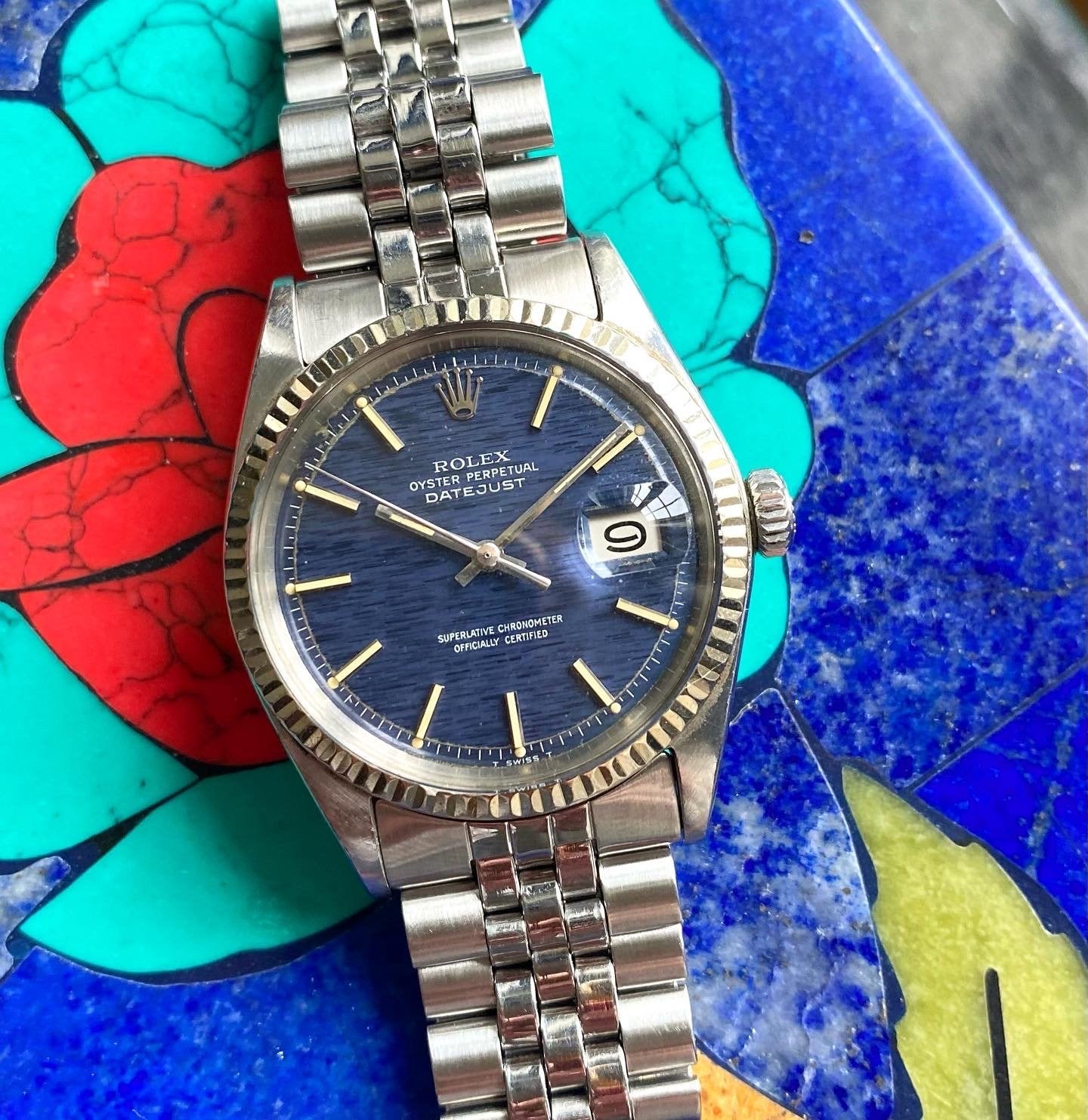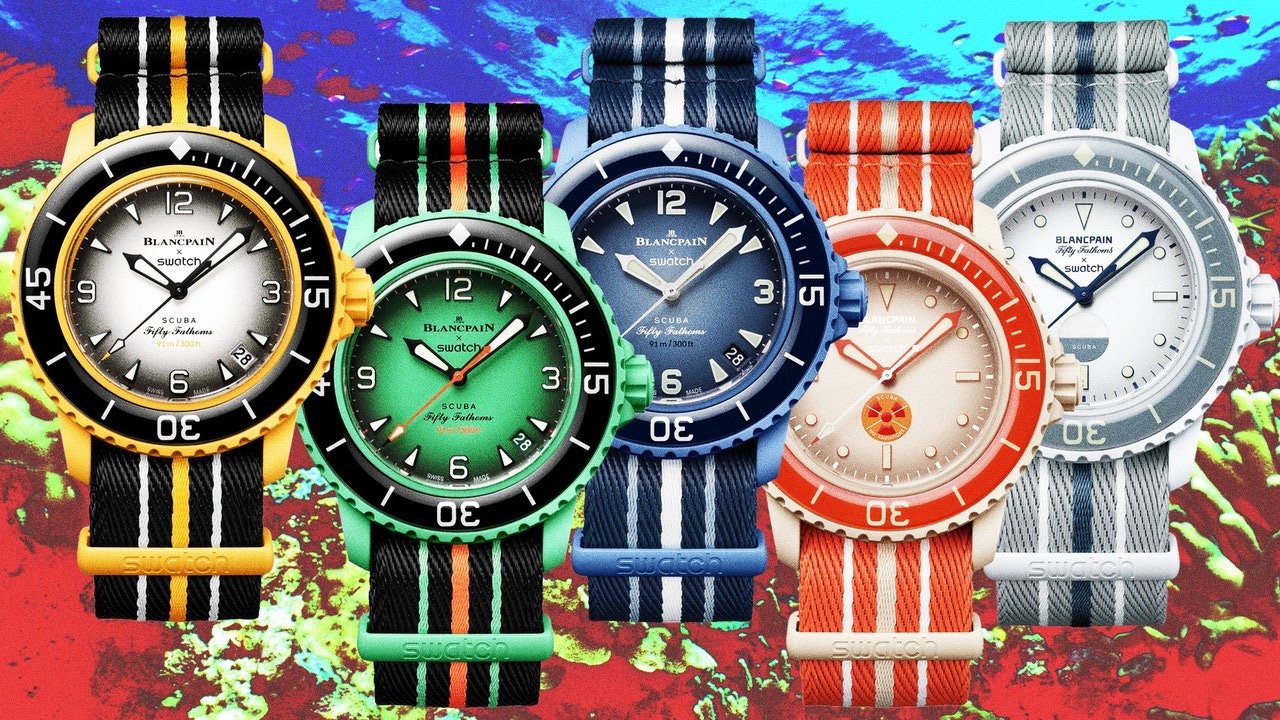Market Sustainability and Acessibility
Exploring cultural factors that influence the state of the watch market
By J. Heffner - pinaplwtchs
The strength of the vintage watch community has proven itself over decades of continued growth. In contrast to many other hobbies that include some aspect of monetary value, this genre of collecting includes additional elements such as artistry, history, and technological innovation.
In an age where various markets are often exploited by those with little subject matter knowledge (in a Ponzi scheme-esque manner), vintage watch collecting continues to differentiate itself while simultaneously riding the waves of market volatility. In short, this is not a fad, but a culture that’s set in stone.
As this hobby continues to reflect adaptations in consumer values, the word sustainability holds more than one meaning (especially in the luxury space). Today, we explore the watch community’s definition of this term through a snapshot of this dynamic market.
Sustainable Investment
Often the most expensive purchases are the greatest victims of value depreciation. In the luxury sector, this remains a considerable aspect for the consumer. In the watch community, some of the most significant decisions lead with this factor in mind.
There is, however, a unique phenomenon that occurs when collecting watches (primarily vintage); that is, many luxury timepieces can be bought, worn, and enjoyed on a daily basis without worry of consequential devaluation. As the market of those interested in vintage timepieces continues to expand, this concept of value retention has been brought to the forefront of buyer decisions.

Patek’s marketing touches on this idea of longevity / Credit: Ad Patina
As we begin to explore this idea of value retention, note that this is one of the most heavily debated topics in the watch community. Some are rather bullish, and view watches as alternative investments; others take the approach that watches are expensive toys for enjoyment first and foremost. Regardless of whether a watch gains or depreciates, it’s important to note that virtually all timepieces retain some form of value. For example, even if your Rolex experiences a $3,000 loss while in your possession, it is still worth thousands of dollars.
Considering this characteristic of luxury watches, those who regularly buy and sell most notably benefit from this experience. Overall, this is often attributed to intelligent decisions made prior to any exchange of wealth. That being said, some collectors solely prioritize buying historically valuable pieces, and others procure just what they enjoy. Balancing one’s wants, the potential monetary retention of a specific timepiece is unique to this industry, which ultimately lends itself to the sustainable nature of wealth in watches.

Consider the language used on the page immediately following the guarantee in vintage Rolex paperwork. Marketing that lends itself to longevity / Credit: GAJ Watches
Environmental impacts
The idea of environmentalism has crept into many nontraditional industries, and the watch community is no different. Brands have begun to market specific references as environmentally friendly; this includes portions of sales being donated to charity, the incorporation of ethical gold, or even incorporating recyclable materials into watch design. In a sense, younger generations are more adept in this form of conscious consumption, especially in a world driven by fast fashion and disposable goods.
Watches, especially those that utilize precious materials, are products of a deeply rooted global economy predicated on industries such as mining, shipping, and labor. Using a vintage ‘stone dial’ Piaget as an example, the solid gold case and precious dial were likely sourced by multinational gold conglomerates like AngloGold (where mining is most often in the African continent), refined and constructed in Switzerland, and then shipped through a network of global distributors for sale to the consumer.

A schematic showing the journey of raw materials / Credit: pinaplwtchs
Additionally, there is a growing sentiment that longevity is an asset when considering a luxury purchase. In the case of vintage timepieces, even the name of this community implies some form of durability, or the watch’s ability to withstand the test of time. In the words of New York-based vintage watch dealer Daniel Matatov:
“These watches were here before our lifetime and will certainly be around after our lifetime.”
Along these lines of cultural factors that shape the vintage watch market, an additional aspect of accessibility continues to leave a lasting impact. In this sense, online platforms allow for the trade of goods on an international scale, which contrasts the traditional brick and mortar watch experience. This is truly one of the factors that sustains the growth of the watch community
To summarize these points, avid collectors may not consider sustainability when purchasing a timepiece, but with vintage, the sheer longevity of these watches (predicated on their construction) speaks to an aspect of sustainability. Coupled with an increasingly conscientious base in regards to environmental impact, this shifting attitude is difficult to ignore in the current state of the market.
Danny’s Take:
The future of watch collecting and what are younger consumers paying attention to?
Vintage watch collecting has been a popular hobby for many years, and it's unlikely to calm down, let alone fizzle out as just another “fad”. Watches as both a hobby and a genre are on people’s everyday radars and for good reason: there’s money involved!
More and more first time and seasoned consumers are conscious of value retention in their luxury purchases in the past few years, not only with luxury wrist watches, but with select handbags, jewelry, and other collectibles such as sports memorabilia and comics. People are really paying attention to “alternative investments” as the conventional way of investing in the stock market isn’t the only option for mainstream investing now. Parking one’s money into physical goods or “assets”, controversial term for some in the watch community, are great alternatives as a hedge against inflation or when the US dollar weakens (currently in Q2 2023)
One significant factor that will impact the future of vintage watch collecting is the increasing interest in sustainability and conscious consumption. As people become more aware of the environmental impact of fast fashion and disposable consumer goods, there is a growing appreciation for the durability and longevity of vintage watches. Vintage Rolex especially were meant to outlive us. These watches were here before us and will certainly be around after. Although avid collectors aren’t thinking about “sustainability” when collecting (including myself), the idea of these watches being purchased and repurchased again, like with preowned goods companies such as the RealReal and Rebag, it’s the same idea. Consumers are looking for value, whether that be pre owned or vintage. People have been welcoming the idea of preowned, especially after COVID.
Another factor that will shape the future of vintage watch collecting is the rise of digital platforms and online marketplaces such as Bezel, Chrono24, or online sellers like me! traditional brick-and-mortar stores will always have a place in the vintage watch market, online platforms have made it easier for collectors to find rare and unique pieces from around the world. This increased accessibility has opened up the market to a wider audience and made vintage watch collecting more inclusive.

Final Thoughts
Many of the factors currently affecting the watch market are tied to this idea of sustainability and its multiple interpretations. From a purely monetary mindset, to one focused on environmental impact, the watch community continues to be a product of the larger market at play.
Considering these aspects of the consumer mindset, one can assume that this is a dynamic market subject to constant change. Many enthusiasts predict market prosperity, while others attribute watch popularity with times of economic growth.
Overall, as this space continues to mature, one can only predict what factors will influence this market in both the near and distant future.




